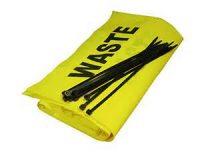6 Tips for SQGs for Inspecting Hazardous Waste Tanks
SQGs are those that generate more than 100 kilograms (kg) but less than 1,000 kg of hazardous waste, including no more than 1 kg of acutely hazardous waste a month. Note: 1 kg = 2.2 pounds (lb) 100 kg = 220 lb 1,000 kg = 2,200 lb While SQGs accumulating hazardous waste in tanks are […]










